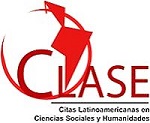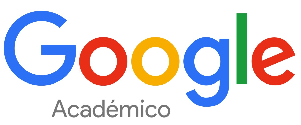Gender Equality in Women's Professional Growth, Northeast Region of Sonora
DOI:
https://doi.org/10.33571/teuken.v15n24a6Keywords:
Gender, equity, professional growth, women, glass ceilingAbstract
The present work examines gender equality in women's professional development in the northeastern Sonora region. It highlights historical barriers women have faced, including domestic roles and exclusion from certain fields of work. Despite these challenges, significant progress has been made, with gender equality emerging as a prioritized objective in society and organizations. The study analyzes policies and laws promoting equity in the workplace, and identifies areas where gender disparities persist; gender equity in the workplace is crucial for social justice and sustainable development. This study contributes to understanding factors influencing women's professional growth in the region, providing relevant information for the formulation of policies and programs aimed at promoting gender equality in the workplace.
Article Metrics
Abstract: 289 PDF (Español (España)): 127PlumX metrics
References
Acker, J. (2006). Inequality regimes: Gender, class, and race in organizations. Gender & society, 20(4), 441-464. https://doi.org/10.1177/08912432062894 DOI: https://doi.org/10.1177/0891243206289499
Alfaro, E. (2008). La participación de las mujeres en el deporte. Seminario Iberoamericano Mujer y Deporte.
Alfaro, E., Vázquez, B., Gallardo, J. y Ferro, S. (2013). Mujeres en puestos de responsabilidad dentro de las organizaciones públicas deportivas de la Comunidad de Madrid. Ágora para la educación física y el deporte, (15), 40-53. https://core.ac.uk/download/pdf/211106852.pdf
Arora, D., Braunstein, E. & Seguino, S. (2023). A macro analysis of gender segregation and job quality in Latin America. World Development, 164, 106153, https://doi.org/10.1016/j.worlddev.2022.106153 DOI: https://doi.org/10.1016/j.worlddev.2022.106153
Barberá, E., Ramos, A., Sarrió, M. y Candela, C. (2002). Más allá del «techo de cristal. Diversidad de género. Revista del Ministerio de Trabajo e Inmigración, 40, 55-68.
Bares, L., Costanza, F., Ortega, M. & Strid, S. (2023). Integrating Gender Equality in Economics and Management. In Gender-Competent Legal Education (pp. 631-666). Springer International Publishing. DOI: https://doi.org/10.1007/978-3-031-14360-1_18
Barr, D., Gonzalez, M. & Wanat, S. (2008). The leaky pipeline: Factors associated with early decline in interest in premedical studies among underrepresented minority undergraduate students. Academic Medicine, 83(5), 503-511. https://doi.org/10.1097/ACM.0b013e31816bda16 DOI: https://doi.org/10.1097/ACM.0b013e31816bda16
Barreiro-Gen, M., Lozano, R., Temel, M. & Carpenter, A. (2021). Gender equality for sustainability in ports: Developing a framework. Marine Policy, 131, 104593, https://doi.org/10.1016/j.marpol.2021.104593 DOI: https://doi.org/10.1016/j.marpol.2021.104593
Bielby, D. (2009). Gender inequality in culture industries: Women and men writers in film and television. Sociologie du travail, 51(2), 237-252, https://doi.org/10.4000/sdt.16462 DOI: https://doi.org/10.1016/j.soctra.2009.03.006
Burke, R. & McKeen, C. (1991). Women in management. Queen's University, School of Business, Research Program.
Burke, R. & Mattis, M. (Eds.). (2007). Women and minorities in science, technology, engineering, and mathematics. Upping the numbers. Edward Elgar Publishing. DOI: https://doi.org/10.4337/9781847206879
Canton, H. (Ed.) (2021). Inter-Parliamentary Union—IPU. In The Europa Directory of International Organizations 2021 (pp. 645-648). Routledge. DOI: https://doi.org/10.4324/9781003179900-97
Carrancio, C. (2018). El techo de cristal en el sector público: Acceso y promoción de las mujeres a los puestos de responsabilidad. Revista Española de Sociología, 27(3), 475-489. http://dx.doi.org/10.22325/fes/res.2018.17 DOI: https://doi.org/10.22325/fes/res.2018.17
Castañeda, S. (2022). Equidad de género en los mandos directivos educativos. Ciencia y Filosofía, 7, 52-66, https://doi.org/10.38128/cienciayfilosofa.v7i7.48 DOI: https://doi.org/10.38128/cienciayfilosofa.v7i7.48
Chesley, N., & Flood, S. (2017). Signs of change? At‐home and breadwinner parents' housework and child‐care time. Journal of Marriage and Family, 79(2), 511-534, https://doi.org/10.1111/jomf.12376 DOI: https://doi.org/10.1111/jomf.12376
Cobo, R. (2015). El cuerpo de las mujeres y la sobrecarga de sexualidad. Investigaciones feministas, 6, 7-19. https://doi.org/10.5209/rev_INFE.2015.v6.51376 DOI: https://doi.org/10.5209/rev_INFE.2015.v6.51376
Cornwall, A. & Rivas, A. M. (2015). From ‘gender equality and ‘women’s empowerment’to global justice: reclaiming a transformative agenda for gender and development. Third world quarterly, 36(2), 396-415, https://doi.org/10.1080/01436597.2015.1013341 DOI: https://doi.org/10.1080/01436597.2015.1013341
Cuadrado, I. y Morales, J. F. (2007). Algunas claves sobre el techo de cristal en las organizaciones. Journal of Work and Organizational Psychology, 23(2), 183-202. https://journals.copmadrid.org/jwop/files/105873.pdf
Dashper, K. (2020). Mentoring for gender equality: Supporting female leaders in the hospitality industry. International Journal of Hospitality Management, 88, 102397, https://doi.org/10.1016/j.ijhm.2019.102397 DOI: https://doi.org/10.1016/j.ijhm.2019.102397
Davidson, M. (1991). Women and employment. In P. Warr (Dir.), Psychology at Work (pp. 223-246). Penguin Book.
Eagly, A. & Carli, L. (2007). Through the labyrinth: The truth about how women become leaders. Harvard Business School Press.
Fekih-Romdhane, F., Bitar, Z., Rogoza, R., Sarray, A., Malaeb, D., Rashid, T. & Hallit, S. (2023). Validity and reliability of the arabic version of the self-report single-item self-esteem scale (A-SISE). BMC psychiatry, 23(1), 351. https://doi.org/10.1186/s12888-023-04865-y DOI: https://doi.org/10.1186/s12888-023-04865-y
González, A., Valenzuela, A. y Maya, J. (2013). ¿Año 2013 cuentan los Municipios de Sonora con Presupuesto Participativo y Pro-equidad de género? Biolex Revista Jurídica del Departamento de Derecho, 5(9), 40-63, DOI: https://doi.org/10.36796/biolex.v9i0.97 DOI: https://doi.org/10.36796/biolex.v9i0.97
Guil, A. (2008). Mujeres y ciencia: techos de cristal. EccoS Revista Científica, 10(1), 213-232. https://doi.org/10.5585/eccos.v10i1.1056 DOI: https://doi.org/10.5585/eccos.v10i1.1056
Guy, M. (Ed.) (1992). Women and men in the States. Public Administrators at the State Level (1st ed.). Sharpe.
Instituto de las Mujeres. (2006). Mujer en Cifras. http://www.mtas.es/mujer/mujeres/cifras/
Instituto Nacional de Estadística y Geografía [INEGI]. (2024) Encuesta Nacional de Ocupación y Empleo [ENOE]. https://www.inegi.org.mx/contenidos/saladeprensa/boletines/2024/ENOE/ENOE2024_05.pdf
Jiménez, C., Rojas, P. y Troncoso, R. (2014). Género, trabajo y subjetividad: el lugar de la mujer en la minería. Persona y sociedad, 28(3), 65-96. https://doi.org/10.53689/pys.v28i3.74 DOI: https://doi.org/10.53689/pys.v28i3.74
Kabeer, N., & Natali, L. (2013). Gender equality and economic growth: Is there a win‐win? IDS Working Papers, 2013(417), 1-58, https://doi.org/10.1111/j.2040-0209.2013.00417.x DOI: https://doi.org/10.1111/j.2040-0209.2013.00417.x
Kabeer, N. (2021). Gender Equality, Inclusive Growth, and Labour Markets. In Women’s Economic Empowerment (1st ed., pp. 13-48). Routledge. DOI: https://doi.org/10.4324/9781003141938-3
Kain, P. & Sharma, M. (2013). Women Entrepreneurship Education Need for Today. International Journal of Management Sciences and Technology, 1(1), 43-53.
Kapoor, D., Sardana, T. & Sharma, D. (2021). Women as leaders: A systematic review of glass ceiling and organisational development. The International Journal of Indian Psychology, 9(1), 572-591. https://doi.org/10.25215/0901.058
Kuznekoff, J. & Titsworth, S. (2013). The impact of mobile phone usage on student learning. Communication Education, 62(3), 233-252. https://doi.org/10.1080/03634523.2013.767917 DOI: https://doi.org/10.1080/03634523.2013.767917
Lent, R. & Brown, S. (2013). Social cognitive model of career self-management: toward a unifying view of adaptive career behavior across the life span. Journal of counseling psychology, 60(4), 557-568. https://doi.org/10.1037/a0033446 DOI: https://doi.org/10.1037/a0033446
Leavy, P. (2022). Research Design. Quantitative, qualitative, mixed methods, arts-based, and community-based participatory research approaches. Guilford Publications.
Lozar, K., Bosnjak, M., Berzelak, J., Haas, I. & Vehovar, V. (2008). Web surveys versus other survey modes: A meta-analysis comparing response rates. International journal of market research, 50(1), 79-104. https://doi.org/10.1177/147078530805000107 DOI: https://doi.org/10.1177/147078530805000107
Lutz, A. y Zaremberg, G. (2022). Transformaciones de roles de género en la comunidad rural minera de Cucurpe, Sonora. Desacatos. Revista de Ciencias Sociales, (68), 50-67. https://desacatos.ciesas.edu.mx/index.php/Desacatos/article/view/2486
Madrigal-Martínez, A., Cruz-Rivero, L. y Méndez-Hernández, M. (2023). Liderazgo femenino en el sector manufacturero: la importancia del papel de la mujer y la ingeniería en los procesos clave de una herrería. Revista Internacional de Desarrollo Regional Sustentable RINDERESU, 7(1-2), 194-202. http://rinderesu.com/index.php/rinderesu/article/view/140/142
Mayorga, K. (2018). Igualdad de género en la educación superior en el siglo XXI. Palermo Business Review, (18), 137-144. http://unesdoc.unesco.org/images/0013/001310/131040s.pdf
Meza, C. (2018). Discriminación laboral por género: una mirada desde el efecto techo de cristal. Equidad y Desarrollo, 1(32), 11-31. https://doi.org/10.19052/ed.5243 DOI: https://doi.org/10.19052/ed.5243
Naff, K. (1994). Through the glass ceiling: Prospects for the advancement of women in the federal civil service. Public Administration Review, 54(6), 507-514. https://doi.org/10.2307/976669 DOI: https://doi.org/10.2307/976669
Núñez, G., Valdez, D. y Ochoa, B. (2017). Evaluación del desempeño organizacional derivado del género del gerente en las PYMES del sur de Sonora. Revista Gestión y estrategia, (51), 11-22. https://doi.org/10.24275/uam/azc/dcsh/gye/2017n51/Nunez DOI: https://doi.org/10.24275/uam/azc/dcsh/gye/2017n51/Nunez
Nurabadi, A., Triwiyanto, T., Gunawan, I., Valenda, O., Pribadi, S., Darmawan, A. & Wardani, A. (2022, October). Assessing validity and reliability of an instrument for measuring student digital leadership: Example from Indonesia (Conference). 8th International Conference on Education and Technology (ICET) (pp. 288-292). IEEE. https://doi.org/10.1109/ICET56879.2022.9990863 DOI: https://doi.org/10.1109/ICET56879.2022.9990863
Organización de Cooperación y Desarrollo Económico [OCDE]. (1986). La integración de la mujer en la economía. Informes OCDE – Ministerio de Trabajo y Seguridad Social.
Phillips, S. & Imhoff, A. (1997). Women and career development: A decade of research. Annual Review of Psychology, 48, 31-59, https://doi.org/10.1146/annurev.psych.48.1.31 DOI: https://doi.org/10.1146/annurev.psych.48.1.31
Plataforma de información para la evaluación de la estrategia de Gobierno [PIEEG]. (2020). Plan estatal de desarrollo 2021-2027. Gobierno del Estado de Sonora. https://estrategia.sonora.gob.mx/producto/perfiles-municipales.html
Powell, G. (1999). Reflections on the ceiling glass. Recent trend and future prospects. In G. Powell (Ed.). Handbook of gender and work (pp. 325-346). Sage Publications. DOI: https://doi.org/10.4135/9781452231365.n17
Reshi, I. & Sudha, T. (2023). Economic empowerment of women: A review of current research. International Journal of Educational Review, Law & Social Sciences (IJERLAS), 3(2), 601-605. https://doi.org/10.54443/ijerlas.v3i2.746
Rodríguez, R. y Camberos, M. (2007). Análisis de la discriminación salarial de la mujer en Hermosillo, Sonora. Política y cultura, (28), 219-250. https://polcul.xoc.uam.mx/index.php/polcul/article/view/1039
Romo, H. (1998). La metodología de la encuesta. En J. Galindo (Coord.). Técnicas de investigación en sociedad, cultura y comunicación (pp. 33-74). Pearson.
Sarrió, M., Barberá, E., Ramos, A. y Candela, C. (2002). El techo de cristal en la promoción profesional de las mujeres. Revista de Psicología Social, 17(2), 167-182, https://doi.org/10.1174/021347402320007582 DOI: https://doi.org/10.1174/021347402320007582
Scarone, M. (2014). Violencia laboral intramuros: Hostigamiento sexual y otras formas de violencia contra la mujer en las maquiladoras de Sonora y Baja California. Región y sociedad, 26(ESPECIAL4), 129-154. https://doi.org/10.22198/rys.2014.0.a89 DOI: https://doi.org/10.22198/rys.2014.0.a89
Seguino, S. (2016). Global trends in gender equality. Journal of African Development, 18(1), 9-30, https://doi.org/10.5325/jafrideve.18.1.0009 DOI: https://doi.org/10.5325/jafrideve.18.1.0009
Solórzano, C. y Padilla, A. (2023). La discriminación de género a través de las metáforas del cristal. Una aproximación a la situación de las mujeres en la alta dirección de la administración pública en México. Géneroos. Revista de investigación y divulgación sobre los estudios de género, 1(1), 102-137. DOI: https://doi.org/10.53897/RevGenEr.2023.01.04 DOI: https://doi.org/10.53897/RevGenEr.2023.01.04
Tate, G. & Yang, L. (2015). Female leadership and gender equity: Evidence from plant closure. Journal of Financial Economics, 117(1), 77-97, https://doi.org/10.1016/j.jfineco.2014.01.004 DOI: https://doi.org/10.1016/j.jfineco.2014.01.004
Troncoso, R. (2014). Procesos de subjetivación de género en las trabajadoras de la minería del cobre en Chile. El caso de la División El Teniente. Revista Temas Sociológicos, (18), 63-98. https://doi.org/10.29344/07196458.18.1139 DOI: https://doi.org/10.29344/07196458.18.1139
UN Women. (2016). Concepts and definitions. http://www.un.org/ womenwatch/osagi/conceptsandefinitions.htm
UN Women. (2022). Women’s leadership and political participation. https://www.unwomen.org/en/what-we-do/leadership-and-political-participation
Van Vianen, A. & Fischer, A. (2002). Illuminating the glass ceiling: The role of organizational culture preferences. Journal of occupational and Organizational Psychology, 75(3), 315-337, https://doi.org/10.1348/096317902320369730 DOI: https://doi.org/10.1348/096317902320369730
Wang, S. & Ackerman, S. (2020). The motherhood penalty: is it alive and well in 2020? Journal of the American College of Radiology, 17(5), 688-689, https://doi.org/10.1016/j.jacr.2019.11.028 DOI: https://doi.org/10.1016/j.jacr.2019.11.028
Wirth, L. (2001). Romper el techo de cristal. Las mujeres en puestos de dirección. Colección Informes OIT, 58. Ministerio de Trabajo y Asuntos Sociales.
Downloads
Published
How to Cite
Issue
Section
License
Copyright (c) 2024 Alma Danisa Romero Ocaño, Mayra Karina Gálvez Díaz, Oralia del Rosario de Fátima Blanco ortega

This work is licensed under a Creative Commons Attribution-NonCommercial-ShareAlike 4.0 International License.


























